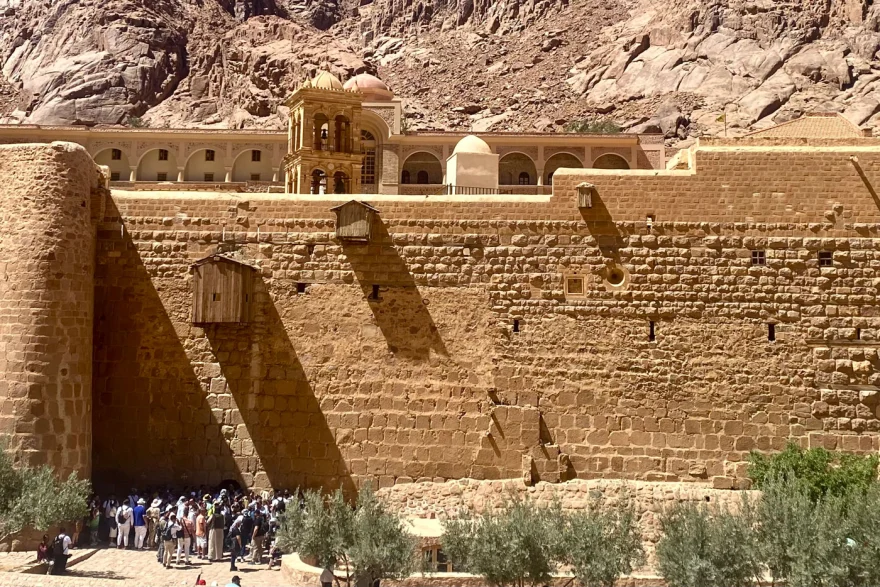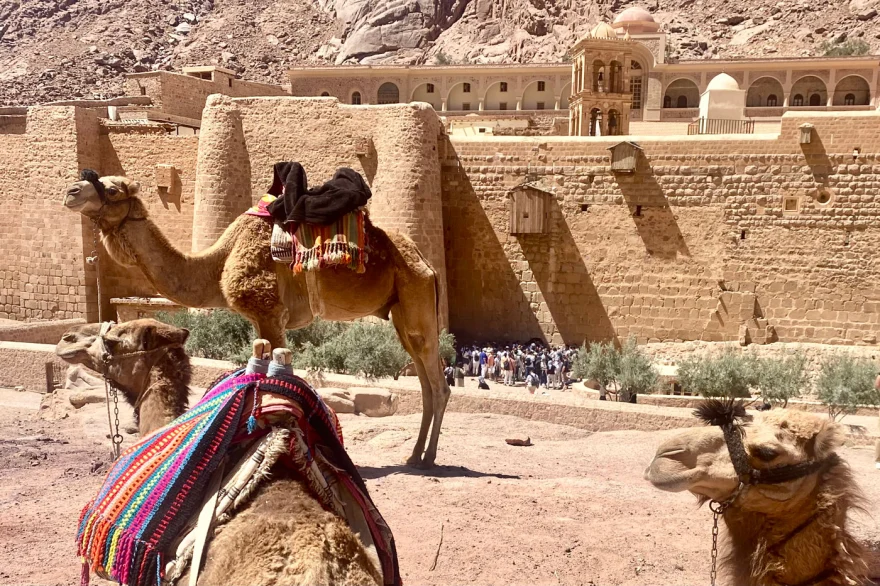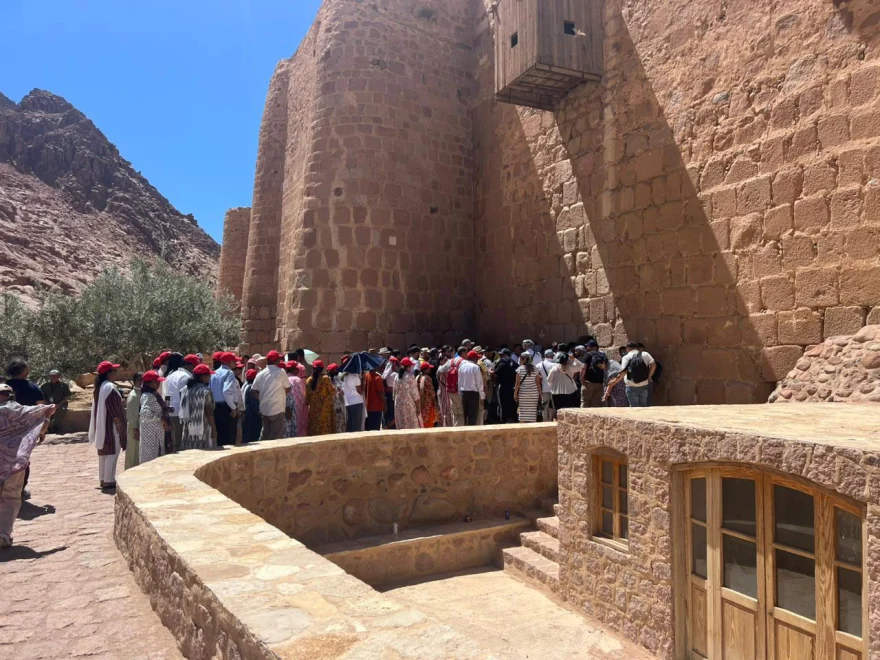The Sinai Desert transcends mere geography; it’s a trial — of resilience, contemplation, and faith. The scorching heat tests human limits, while the unforgiving stones and blinding light create an atmosphere where an enduring spirit has thrived for 15 centuries. This is the Monastery of Saint Catherine: not a mere showcase, but a profound reminder. Today, it faces threats not from armed forces, but through bureaucratic documents and legal seals.
As you step into the monastery’s courtyard, the experience is deeply felt. It’s more than what meets the eye; it envelops you. The encircling walls create a sensation of entering another era. Light within the monastery doesn’t glare; it caresses icons, softly settles in corners, and lingers on age-old wood and burned stones from incense, leading to doors that swung open under Justinian and have remained so ever since.
The monks move in silence, speaking only when prompted. When they do engage, it feels as though they carry a weight beyond verbal exchange — a legacy. A young monk nurtures hibiscus and basil flowers that blossom like miracles amidst the desert. An elder sweeps the stone paths with a handmade broom. Another holds an ancient book that took five centuries to reach this place. There’s no sense of urgency; each monk is fully present, serving their purpose rather than merely existing.
Inside the church, the oldest mosaic of the Eastern Church takes your breath away. The Transfiguration of Christ serves not to dazzle, but to remind us of our identity and purpose. Adjacent to it, in the library, the dust is older than the ink. The Sinai Codex isn’t hidden away in a vault — it is alive and accessible. Opposite it rests the renowned “Achtiname,” a letter allegedly signed by Muhammad, promising everlasting protection for the monks’ community — a promise now seeming fragile, not due to invaders but legal proceedings.
Recently, the Ismailia Court of Appeal in Egypt declared all monastery property — including the library, church, fields, and guesthouses — as state property. The monks, once recognized as guardians of prayer and tradition, are now mere “users.” They are neither owners nor custodians, but seemingly visitors in what was once undeniably their home.
Those who do speak express their concerns with a calm demeanor. Yet, beneath their words lies tension. “They don’t need to forcibly remove you; simply let your visa expire,” mentions one monk. Many are on temporary permits lasting nine months, with uncertain prospects for renewal. There’s no outright eviction, just a legal softening — a quiet removal.

Behind closed doors, tensions rise. In Athens, diplomats are taking action. Church officials express their worries. Not long ago, the Egyptian president assured Greek authorities that the unique status of Saint Catherine’s Monastery would remain intact. Now, this promise appears to clash with the weight of a judicial ruling.
Urgent discussions take place overnight.
The fervor escalated to the point where, mere hours after the court’s ruling, Egypt’s Ministry of Foreign Affairs issued a late-night statement clarifying, “The court’s decision does not alter the monastery’s status.” Simultaneously, the Egyptian presidency reaffirmed that “the ruling aligns with President Sisi’s commitments during his visit to Greece,” emphasizing that it reinforces the monastery’s sacred character. Is this a step back? A move to quell tensions? Or merely a statement that hinges on interpretation?
The monks of Sinai maintain their silence, responding traditionally with patience, prayer, and care for their gardens. Their continuing, quiet dedication over 15 centuries speaks volumes. Sinai is not the domain of states, archaeological boards, or government ministries; it belongs to the human spirit. Each stone testifies, each manuscript embodies a believer’s labor. Every figure in the mosaic serves as a reminder that while the world may shift, the true light endures.

As we departed, we noticed a young monk seated beneath a fig tree. He wasn’t reading, writing, or speaking. He simply gazed at the mountain. In that moment, I understood. This quiet expression stands as the strongest rebuttal to anyone attempting to bind the intangible with regulations. That serene, steadfast gaze reflected the very essence of the monastery. As long as there are people who perceive the world in this light, the monastery will resist all forms of subjugation.
The diplomatic undercurrents and the ongoing ownership dilemma
Following the uproar triggered by the Ismailia Court’s ruling regarding Saint Catherine’s Monastery, Cairo swiftly moved to temper the situation. Late yesterday, announcements from both the Ministry of Foreign Affairs and the Egyptian presidency aimed to restore institutional calm. The presidential statement noted that the court’s decision “aligns with President Sisi’s assurances in Athens” and “reinforces the monastery’s unique religious significance.” Furthermore, the Foreign Ministry labeled claims of confiscation as baseless.
While persistent affirmations regarding the monastery’s spiritual and religious importance were made, neither statement explicitly addressed who holds ownership of the property. The ambiguity surrounding ownership remains unresolved.

It is noted, however, that some remote territories, distant from the monastery’s center, will be transferred to the Egyptian state due to the absence of property documentation. For the main monastery, efforts are concentrated on preserving operational agreements and usage, with ownership remaining unaddressed.

Despite attempts to diminish concerns surrounding the ruling, a fundamental question persists: does the monastery possess ownership of its land and buildings, or does it belong to the Egyptian state? Official communications sidestep this inquiry. And that silence speaks volumes.
Ask me anything
Explore related questions
















